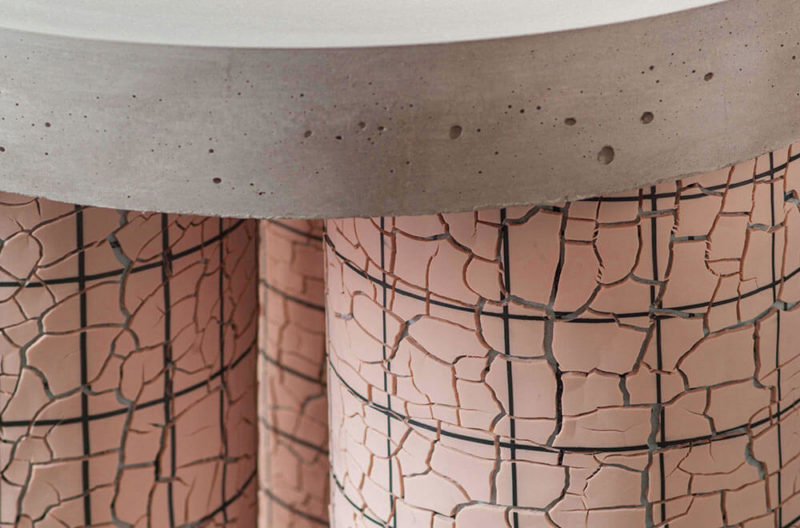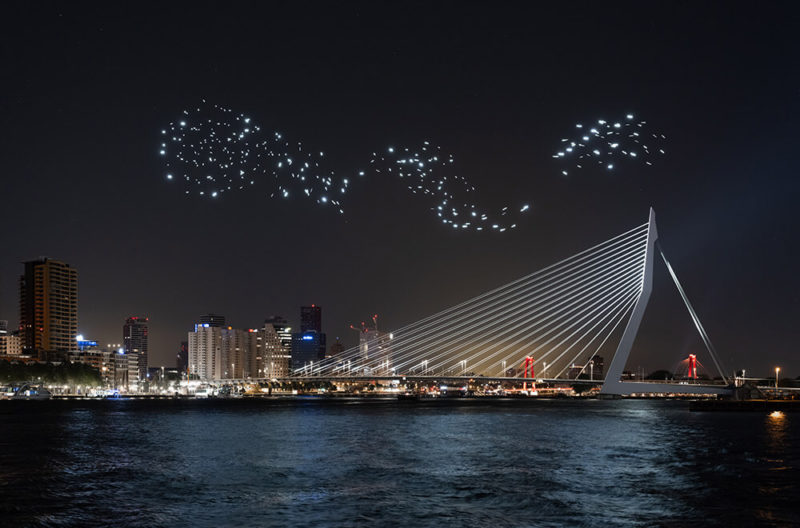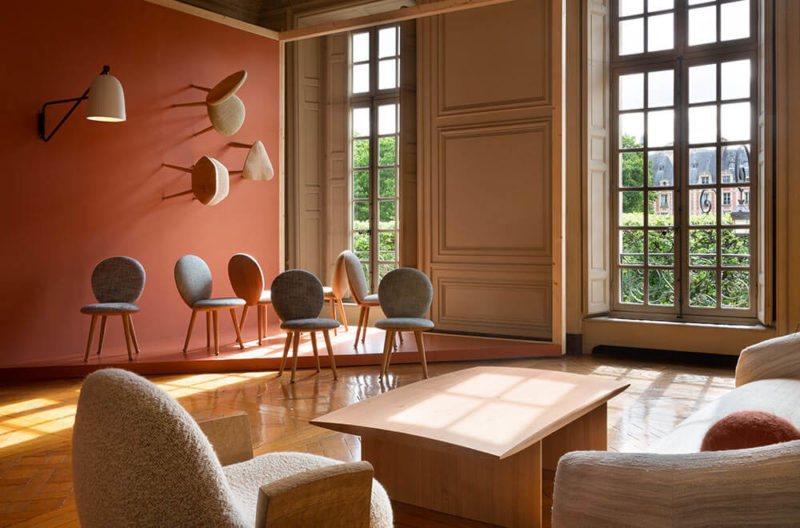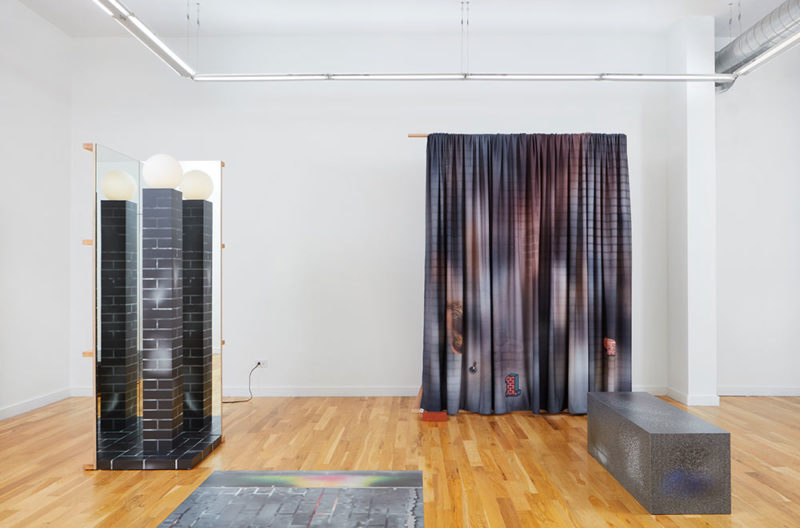Umberto Bellardi Ricci: DAWN
The New York-based Italian architect’s latest furniture and lighting collection plays on the refractive qualities of bent metal.
Matter, New York
24th June – 30th July 2021
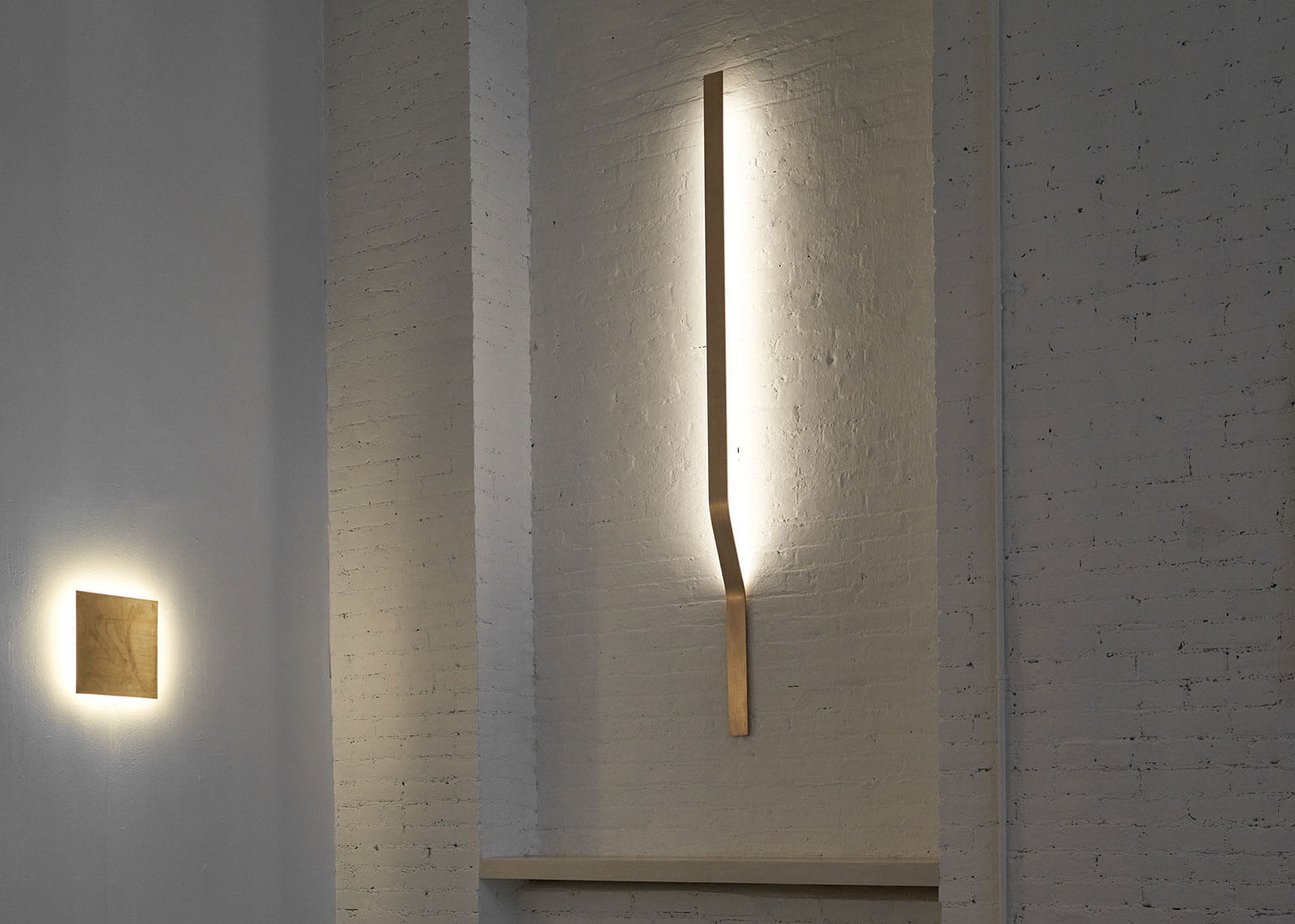
Umberto Bellardi Ricci, ‘Malle’ light, 2020 (left); ‘Fackel Wall’ light, 2020 (right)
COURTESY: Matter / PHOTOGRAPH: Martien Mulder
THOUGH ENTIRELY INTANGIBLE, light can have as much architectonic delineation as a solid material. Bouncing off reflective surfaces, or curtained by rich absorbent textures, this form of electromagnetic radiation can help define patterns, denote depth and magnify space. A new collection of monumental furnishings and luminaires by Italian architect-turned-sculptor Umberto Bellardi Ricci explores this interplay through a series of spatial interventions. For most of the pieces – modular forms that evoke industrial I-beams or a distilled reinterpretation of New York’s iconic skyscraper setbacks – indirect light is used to depict geometric details.
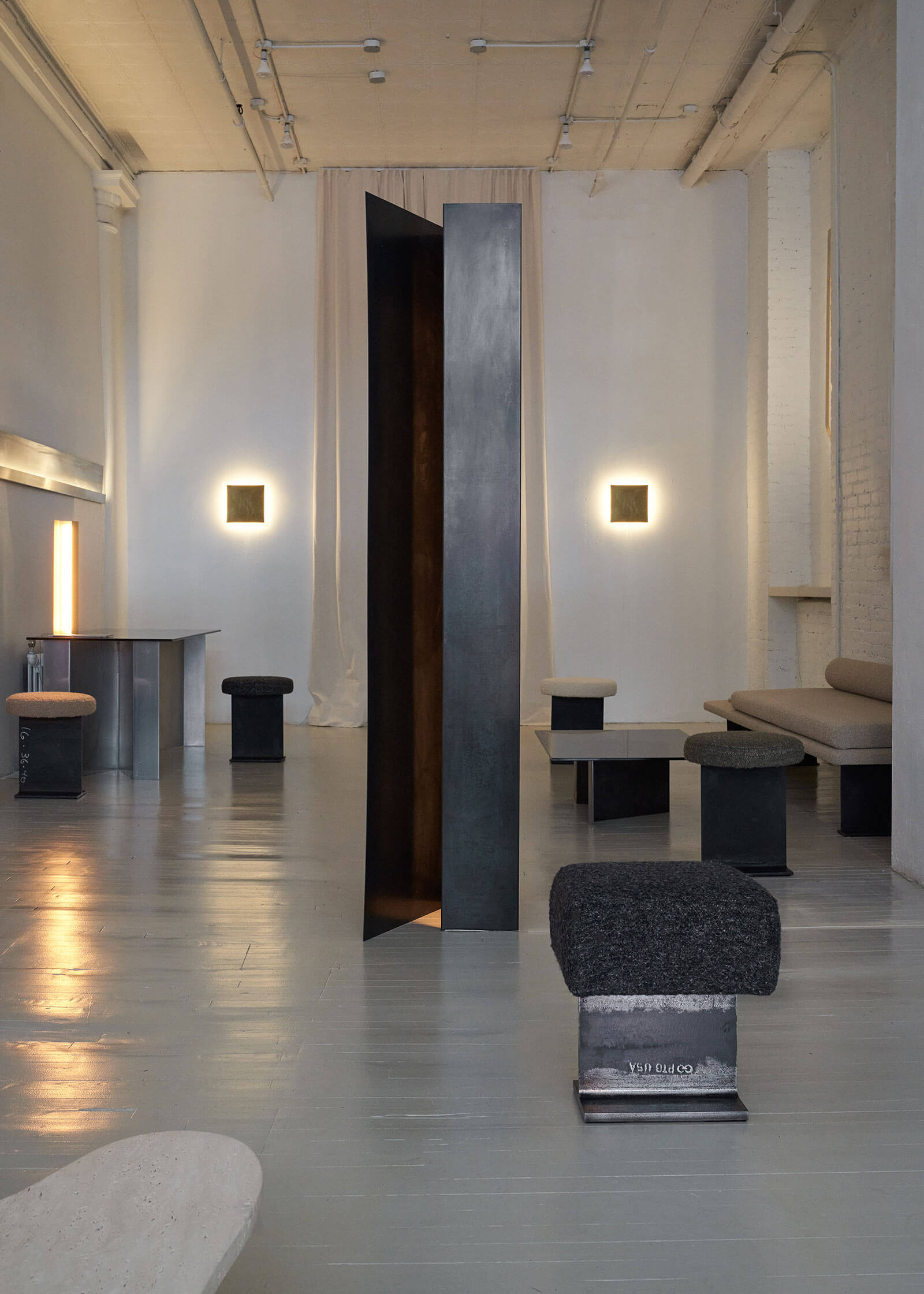
Installation view
COURTESY: Matter / PHOTOGRAPH: Martien Mulder
On view at Matter until 30th July, these minimalist bent aluminium works transform the downtown gallery into an iridescent matrix of intersecting planes, offering a virtuoso series of riffs on the almost alchemical transformation of a flat sheet composite into three-dimensional articulations. Created using complementary noble materials like bronze and travertine, the DAWN collection includes tall floor lamps, extruded wall sconces, low-lying platform sofas, amoebic coffee tables and more. The Design Edit contributor Adrian Madlener spoke to Bellardi Ricci about this latest body of work and how it emerged.
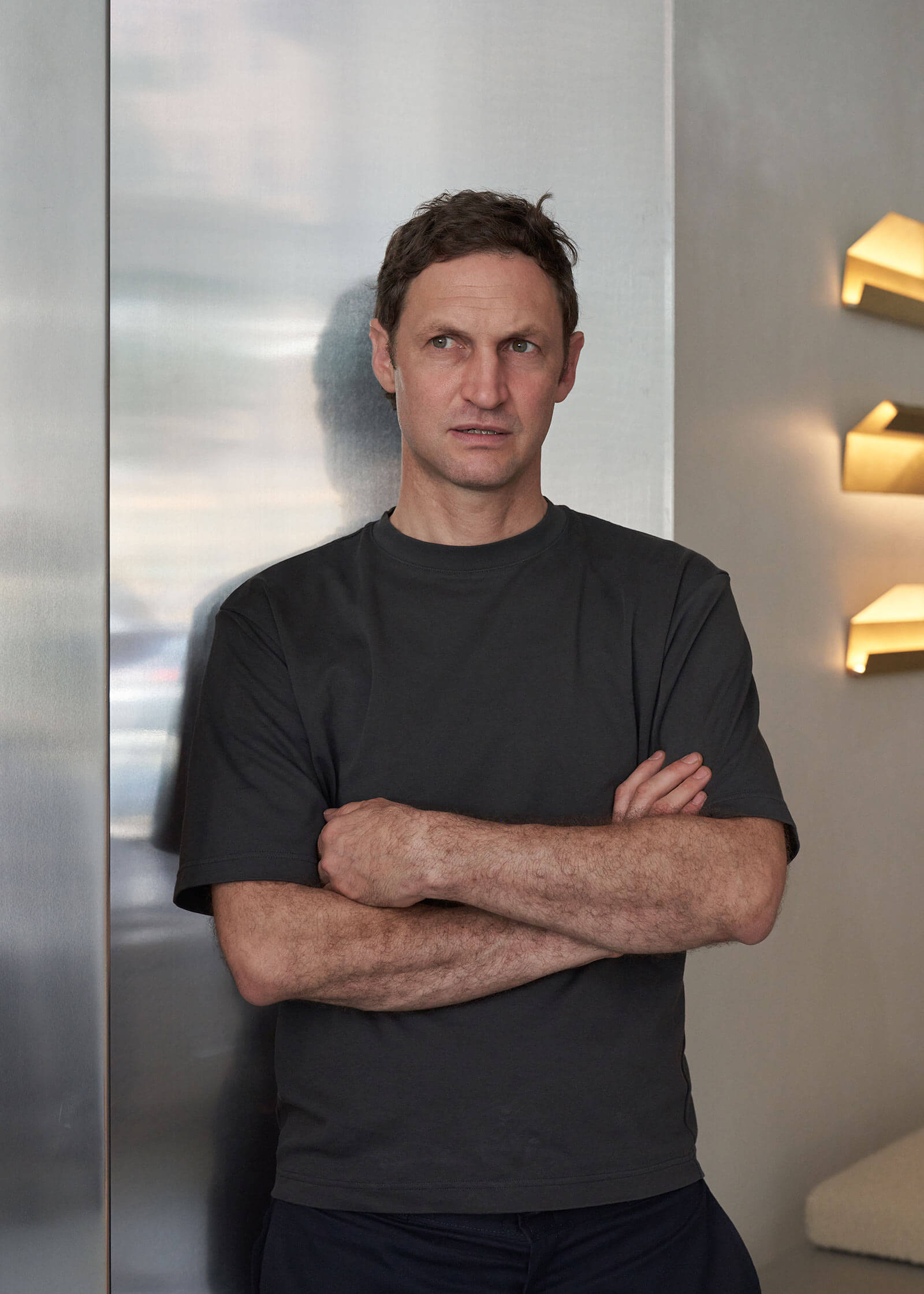
Umberto Bellardi Ricci
COURTESY: Matter / PHOTOGRAPH: Martien Mulder
The Design Edit (TDE): How does your sculpture and furniture-making practice relate to your background in architecture? What are the parallels between these disciplines?
Umberto Bellardi Ricci (UBR): Architecture is essentially the practice of sculpting space, where it’s never entirely clear what’s the enclosure and what’s the volume. This is the core of what I’m trying to express with the new DAWN collection. I enjoy delving deep into non-proportion-specific formal explorations that do not preempt the final scale they’ll be applied to. Making models always allows me to work in this unconstrained way before deciding to produce an object, chair, or even a space.
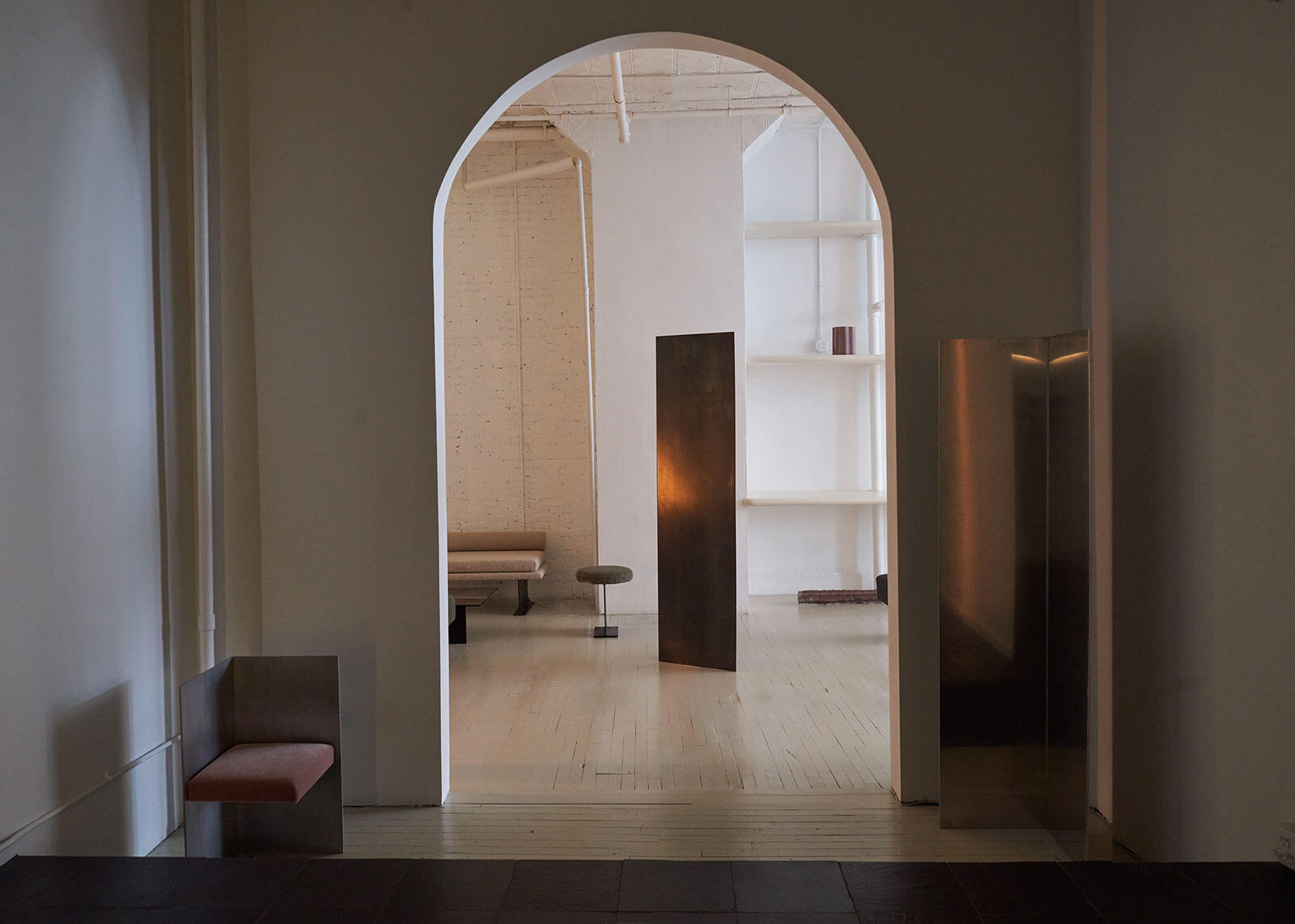
Installation view
COURTESY: Matter / PHOTOGRAPH: Martien Mulder
Discovering non-functional interiors used for contemplation while teaching in Mexico years ago was an eye-opening experience. These spaces were produced like sculptures. I like playing around with the perceived proportion of certain typologies and how different fragmented elements can be materialised. Like the metaphysical painter Giorgio de Chirico once said, “You don’t have to invent anything; you just have to see things differently.” This approach is central to my practice. Scale and function can coexist on many different levels.
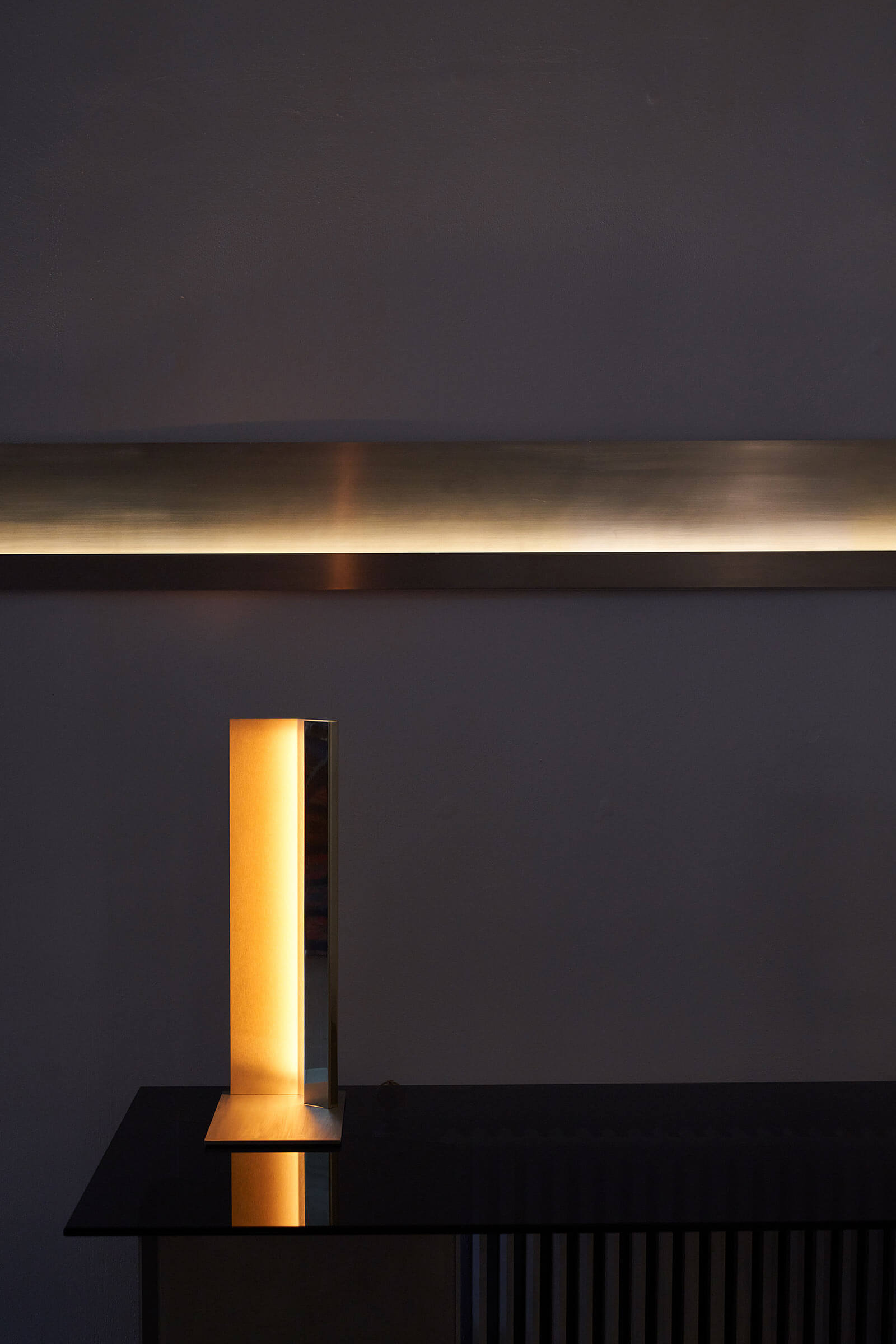
Umberto Bellardi Ricci, ‘Mano Tavola’ desk light, 2019
COURTESY: Matter / PHOTOGRAPH: Martien Mulder
The furniture pieces I design all relate to the human scale. My works either level with, tower over, or rest below the human figure. They’re based on the ongoing investigation into geometric abstraction and reductionism that I’ve engaged in and taught. Skewing standard dimensions, even just slightly, can have a significant impact on one’s perception of a chair or lamp. For example, the ‘Mano Standing Lights’ are much higher than standard lamps in that category and look like wall cut-outs, or even an architectural maquette.
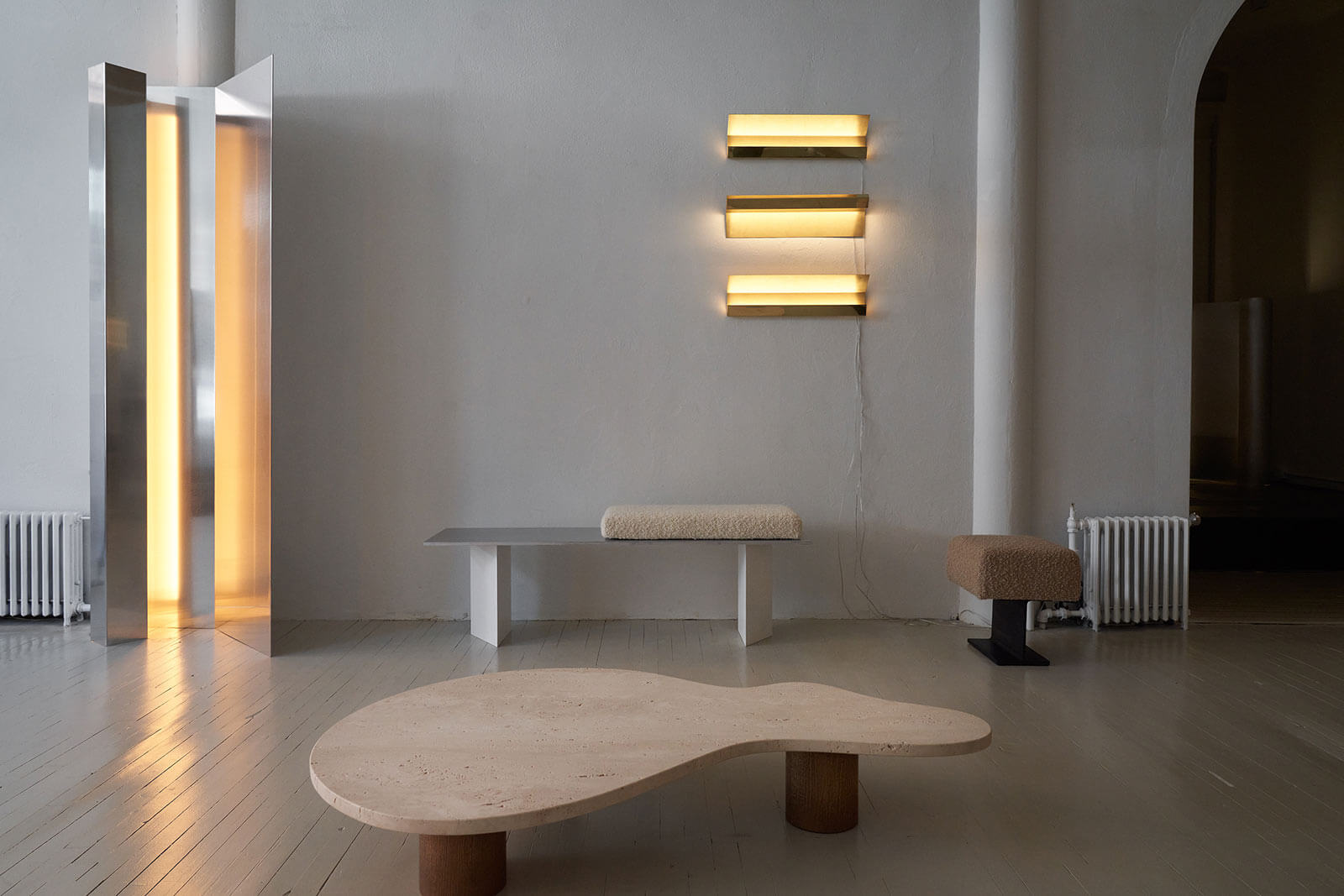
Umberto Bellardi Ricci, (left to right) ‘Spira Light’, 2020; ‘Luca Coffee Table’, 2020; ‘Trave Sofa’, 2020; ‘Mano Wall-Up Small’ light, 2020; ‘Trono Block’, 2020
COURTESY: Matter / PHOTOGRAPH: Martien Mulder
TDE: What does working with folded metal offer you that concrete, or other ubiquitous building materials might not?
UBR: The use of folded metals unconsciously developed while setting up my studio in the past few years. The space faces the Manhattan skyline, which the untrained eye could mistake as a series of folded steel elements of unidentifiable scale. I always feel that the city can only work at that scale, or when viewed from that perspective. When seeing the tall buildings from a direct angle, the proportions are all off, disproportionate and not designed for the human experience.
For five years, I taught a course at the Architectural Association in London, which centred on casting concrete compositions to experiment with different detail and the concept of monumentality. This assignment focused on creating negatives with moulds and creating shapes with what is essentially liquid stone. It was very complex and often required multiple pieces to deal with double curvature and undercuts. Switching to steel allowed me to move away from this arduous process and directly focus on creating the negative components as the final ‘positive.’ These multi-dimensional structures don’t require any additional element to be formed and can stand on their own as vessels holding voids or light.
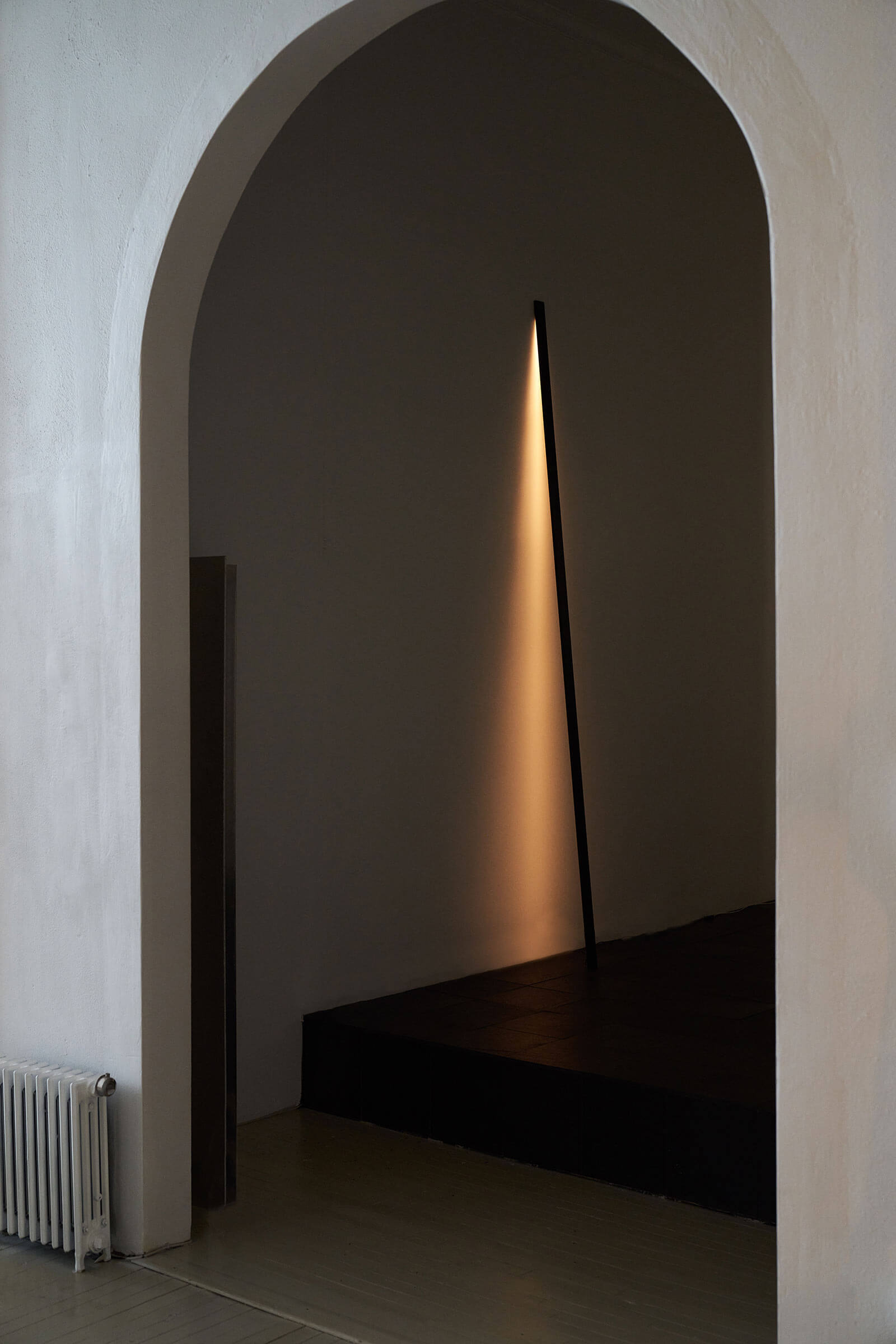
Umberto Bellardi Ricci, ‘Fackel Standing’, 2020
COURTESY: Matter / PHOTOGRAPH: Martien Mulder
TDE: How is the DAWN collection an evolution of this ongoing inquiry?
UBR: The DAWN collection is, as its title signifies, a new beginning for me; the start of a new day after a long night. Light is metaphorically and literally the essence of this exploration and something I’d like to continue to work with in the future. I usually only make two or three intuitive moves per piece, but they need to be precise. Materiality and refraction are critical in this respect, as also demonstrated in the ‘Mano Standing Light’. Its long-grain brushed interior blurs the origin of the light source, while its mirrored exterior reflects the space and the viewer. This contrast helps drive the overall concept of spatial intervention home.
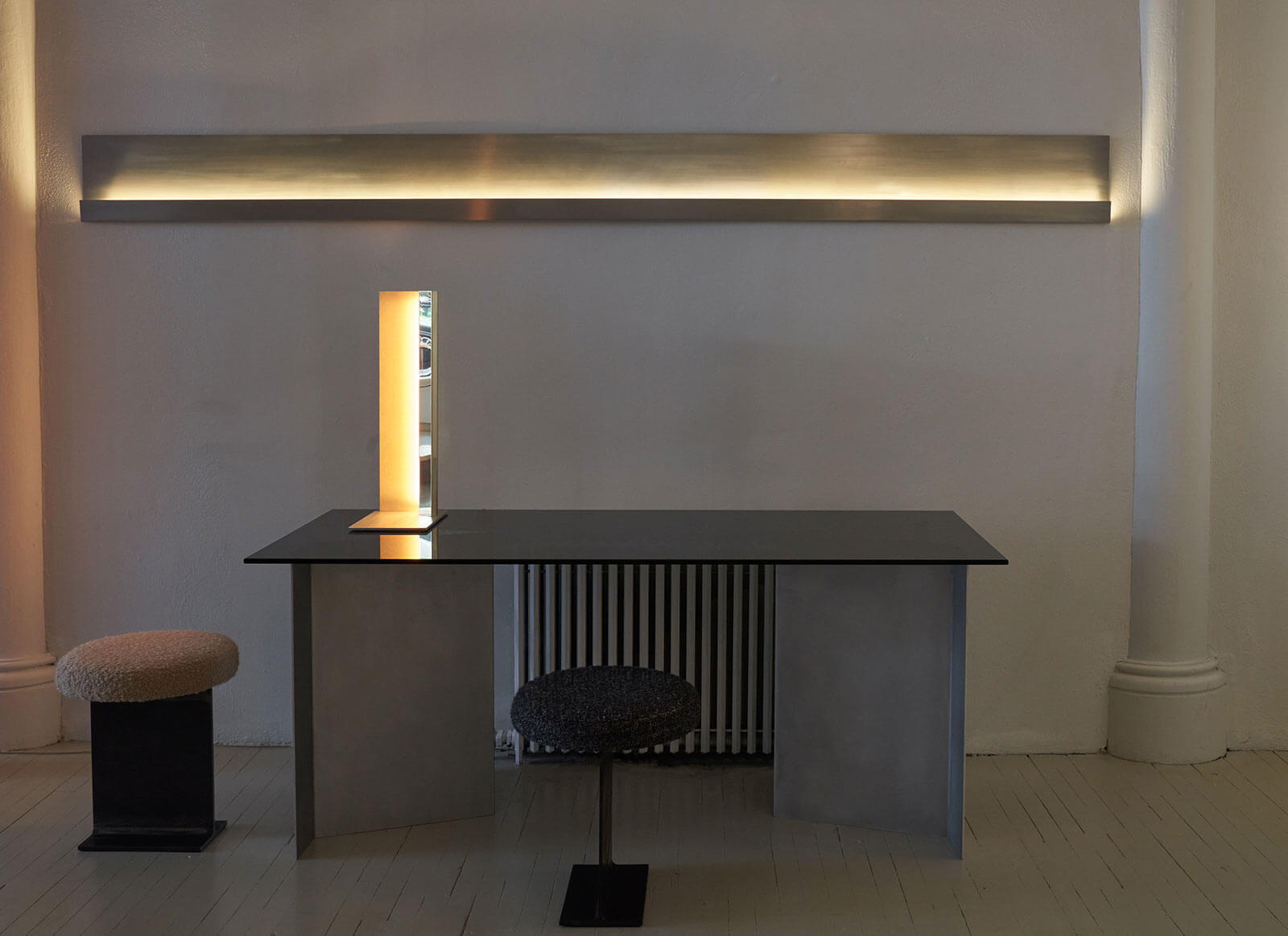
Umberto Bellardi Ricci, (left to right) ‘Trono Block’, 2020; ‘Pica’ table, 2020; ‘Trono Pill’ seat, 2020; ‘Mano Light’, 2019; ‘Spira Light’, 2020
COURTESY: Matter / PHOTOGRAPH: Martien Mulder
I’ve always been fascinated by linguistics and the limitations of language. During my studies in London, I delved deep into the local experimental music scene and became interested in the ideas of sound-based abstraction, especially when it came to the playfulness and almost primal level of improvisation. This is something I began exploring with architectural and sculptural geometry. As illustrated in the DAWN collection, the abstract spatiality of light has replaced the spatiality of sound for me as a more intangible yet visual and maybe even naively optimistic interpretation of these qualities.




